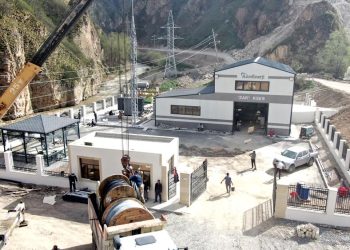 The U.S. has taken Russia’s crown as the biggest oil and natural-gas producer in a demonstration of the seismic shifts in the world energy landscape emanating from America’s shale fields.
The U.S. has taken Russia’s crown as the biggest oil and natural-gas producer in a demonstration of the seismic shifts in the world energy landscape emanating from America’s shale fields.
U.S. oil production rose to a record last year, gaining 1.6 million barrels a day, according to BP Plc’s Statistical Review of World Energy released on Wednesday. Gas output also climbed, putting America ahead of Russia as a producer of the hydrocarbons combined.
The data showing the U.S.’s emergence as the top driller confirms a trend that’s helped the world’s largest economy reduce imports, caused a slump in global energy prices and shifted the country’s foreign policy priorities.
“We are truly witnessing a changing of the guard of global energy suppliers,” BP Chief Economist Spencer Dale said in a presentation. “The implications of the shale revolution for the U.S. are profound.”
The other major shift BP’s report shows is China’s energy demand growing at the slowest pace since the Asian financial crisis of the late 1990s as the economy slows and the country tries to reduce its reliance on heavy industry.
“Growth in some of China’s most energy-intensive sectors, such as steel, iron and cement — which had thrived during China’s rapid industrialization — virtually collapsed in 2014,” said Dale, a former Bank of England chief economist who joined BP last year.
Economic Change
In the U.S., the boom in oil and gas production has started to change the economy profoundly. Cheap fuel has seen manufacturing return to the U.S. as the country produced about 90 percent of the energy it consumed last year.
Last year, imports equaled 1 percent of GDP, according to BP’s data. In 2007, just before the financial crisis, U.S. energy imports accounted for about half of the current account deficit of 5 percent of GDP.
Shale drillers from Exxon Mobil Corp. to Chesapeake Energy Corp. spent about $120 billion last year in the U.S., more than double the amount five years earlier. The surge in output and a slowdown in global demand have pushed crude oil prices down about 40 percent in the past year.
Lower Prices
 The lower prices will force some producers to shut in “frothy activity” at some shale fields in the U.S. but most output can work even at current prices, BP Chief Executive Officer Bob Dudley said in London on Wednesday. The number of rigs drilling in shale fields are down by half from an October peak and may stabilize by the end of the summer, he said.
The lower prices will force some producers to shut in “frothy activity” at some shale fields in the U.S. but most output can work even at current prices, BP Chief Executive Officer Bob Dudley said in London on Wednesday. The number of rigs drilling in shale fields are down by half from an October peak and may stabilize by the end of the summer, he said.
“The shale revolution hasn’t run out of steam in the U.S.,” Dudley said.
The U.S. increase in oil output last year, helping it to overtake Saudi Arabia as a crude producer, was the first time a country has raised production by at least 1 million barrels a day for three consecutive years, BP said.
Among other producers outside the Organization of Petroleum Exporting Countries, Canada and Brazil also reported record production last year, prompting OPEC’s policy shift of ditching price support for defending market share.
On the demand side, countries outside the Organization of Economic Cooperation and Development accounted for all of the net growth in global consumption of 0.8 million barrels a day, or 0.8 percent, last year, BP said. Chinese consumption growth, though slower, still jumped 390,000 barrels a day, the biggest increase in the world.
Oil consumption in developed nations dropped 1.2 percent, the eighth decrease in the past nine years. World natural-gas consumption grew 0.4 percent last year, compared with the 10-year average of 2.4 percent.
The world’s coal use also increased 0.4 percent, slower than the 10-year average annual growth of 2.9 percent, with consumption in China almost slowing as the nation seeks to cut pollution and use more gas for power generation. Coal’s share of primary-energy consumption fell to 30 percent.











